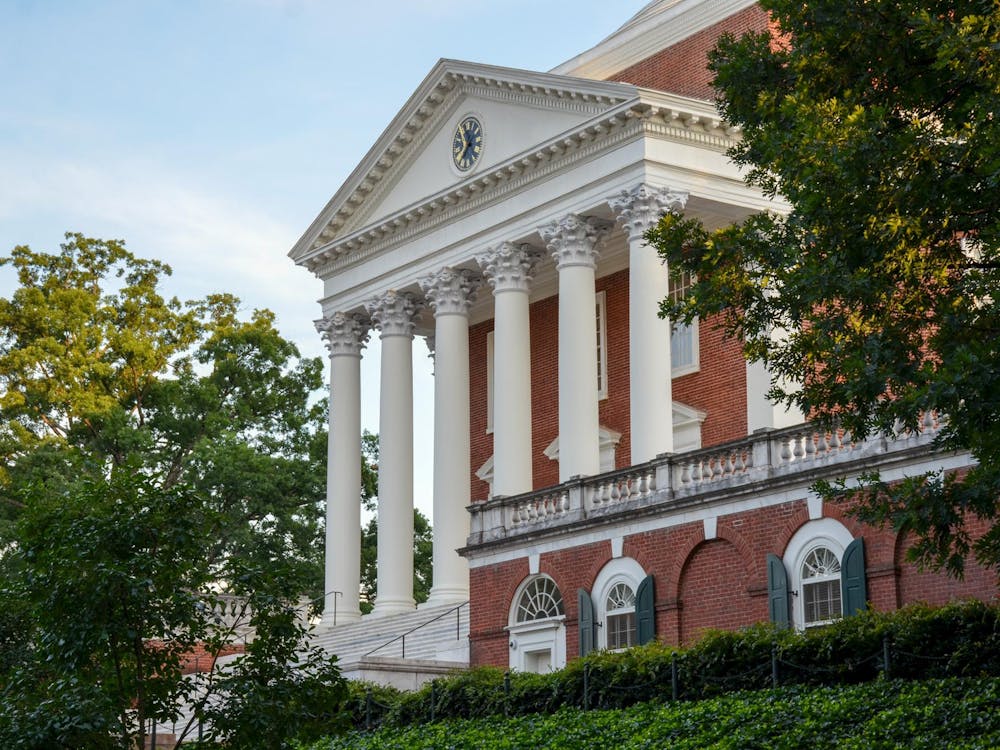THERE is a new tradition at the University, and it’s called construction. Its impact can be seen in any number of places, from what used to be the Ruffner Hall parking lot to the intrusive-looking South Lawn Project, from the new Emily Couric Clinical Cancer Center being built on Jefferson Park Avenue to the slowly emerging, state-of-the-art dorms in the Alderman Road area.
In all of these locations, our beloved tradition of building something new or updating something old stands as a professed beacon of progress, a supposed indication that the University is not only prospering, but also constantly growing to keep pace with its burgeoning population. It is extremely unfortunate — and also telling of where exactly the University’s priorities lie — when more parking garages and bigger sports arenas come to indicate progress.
Those who embrace this tradition promise us a newer, hipper University in the years to come. Yet these promises, accompanied by the unwelcome noise of a jackhammer tearing into pavement or the creation of a ridiculously meandering detour to Old Cabell Hall, are never kept. Instead, construction continues indefinitely as new project after new project gets underway. If the establishment of a state-of-the-art dining hall meets the gastrointestinal needs of students, the need to attend overpriced reunion concerts calls for the construction of a new concert arena. The demand for a café closer to first-year dorms is met just in time for University administrators to refocus their attention upon building a literal hole-in-the-wall café in Clark Hall. At no point during my time at the University have I seen the entire school left alone. Construction walls have always popped up somewhere, and unexpected detours have made me late to class more than once. At what point can we all agree that enough is enough?
It is true that construction and renovation are not inherently bad. Buildings that are deteriorating or failing to meet the academic mission of the University warrant a facelift — sometimes even a complete overhaul. The sweltering temperatures in Old Cabell during the spring and summer, for example, make the building a prime candidate for renovation. Similarly, the construction of buildings intended to meet a community’s needs, such as the future Emily Couric Clinical Cancer Center, is often a worthwhile endeavor. The South Lawn Project even includes plans to memorialize the former site of an African-American community that once lived in an area behind Cabell Hall.
Yet the downside of construction comes in the fact that despite the end goals of creating a more welcoming and accessible community, bulldozers running at five in the morning, blocked entryways and humongous mounds of dirt make the current climate far from inviting. Constant construction detracts from the very goals it purports to embrace. Katy Cordle, a fourth year in the College who used to spend a lot of time in the Music Department, notes that South Lawn construction has caused concertgoers at Old Cabell Hall a number of inconveniences. Elderly community members, for example, have to complete a longer walk to the winding ramp that leads into the building.
If we keep demanding more so-called progress, we are sacrificing the appeal of our much-touted Grounds, even demolishing existing properties that stand in the way of construction, and we. are wasting money that could be better used to improve other areas such as student financial aid or employee salaries. The notion that construction is an inherent sign of progress or that we must continue to build in order to keep up with other universities around the country is flawed. We cannot make our mark on education merely by making our buildings look shiny, pretty, and new. Additionally, just because it would be nice to have another café on the way to class does not mean we should build one.
It is time to define the line that separates useful renovation from needless decoration. Cordle admits that despite the inconveniences of the South Lawn Project, “If I were going to be here when it was finished, I would be pretty excited.” Building new classrooms and new study spaces is a worthwhile endeavor, especially considering the worn state of New Cabell Hall. Yet at some point, we must choose contentment over restlessness, necessity over superfluity. We have to be willing to walk a little further to grab a coffee, or to cherish the aesthetics of a cluster of trees over that of a parking garage. We must recognize the point at which construction causes more problems than it solves.
Amelia Meyer’s column usually appears Fridays in The Cavalier Daily. She can be reached at a.meyer@cavalierdaily.com.






